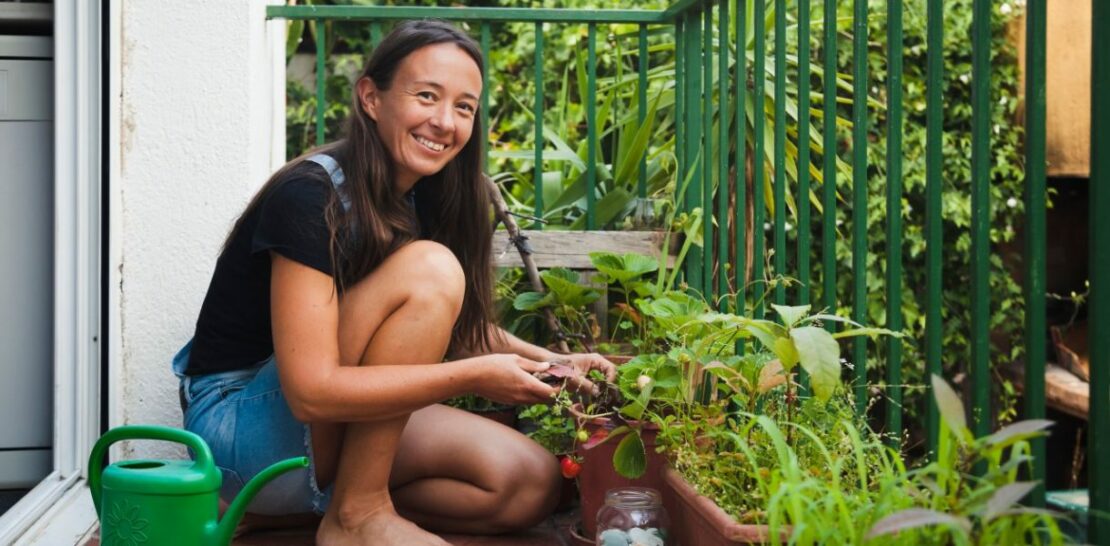As urban dwellers struggle with limited space and concrete surroundings, the desire to bring nature closer grows stronger.
The concept of urban gardening offers a solution that not only adds beauty to a city landscape but also improves air quality and fosters a sense of well-being.
In this comprehensive guide, we will explore the various steps to create a thriving green oasis on your balcony or terrace, making it a perfect retreat from the hustle and bustle of city life.
Assessing the Space and Conditions
Before diving into the exciting world of urban gardening, it is crucial to carefully evaluate the space and environmental conditions available for your green oasis. In doing so, you will ensure the success and sustainability of your urban garden.
- Examine the available space: Take note of the dimensions of your balcony or terrace, and visualize how you can maximize the use of this area. Consider the placement of planters, furniture, and other accessories that will complement your garden aesthetic.
- Assess the sunlight exposure: Observe the amount of sunlight your space receives throughout the day. Most plants require at least six hours of sunlight, so it is essential to choose a suitable location. Be mindful of any obstructions, such as buildings or trees, which may block sunlight.
- Consider the climate: Research the hardiness zone for your region to determine which plants will thrive in your local climate. Additionally, take note of any microclimates that may exist within your space, such as shaded areas or wind tunnels, and adjust your plant selections accordingly.
- Account for weight restrictions: Balconies and terraces often have weight limits imposed by building codes. Be sure to factor in the weight of plants, containers, and other accessories to avoid compromising the structural integrity of your space.
Selecting Appropriate Plants for Your Oasis
Once you have a clear understanding of the available space, sunlight exposure, and climate, it’s time to select the perfect plants for your urban garden. Keep in mind that not all plants are well-suited for container gardening, so it’s essential to choose species that will thrive in your specific conditions.
- Choose plants based on sunlight exposure: Select plants that are compatible with the amount of sunlight your space receives. For example, if your balcony or terrace is shaded for most of the day, opt for shade-tolerant plants such as ferns, hostas, and impatiens. Conversely, sun-loving plants like geraniums, petunias, and lavender will bask in the light on a sun-drenched terrace.
- Opt for plants suited to your climate: Select plants that are well-adapted to your region’s hardiness zone, ensuring they can withstand the local temperature fluctuations. For example, Mediterranean plants, such as rosemary and olive trees, will appreciate the warmth of a southern-facing balcony, while cold-hardy plants, like heuchera and sedum, are better suited for a northern exposure.
- Consider the size and growth habits of plants: Be mindful of the mature size of the plants you choose, as well as their growth habits. Compact, dwarf, or trailing varieties are ideal for small spaces, while taller or bushier plants can act as natural dividers or privacy screens.
- Include a mix of foliage and flowering plants: Incorporate a variety of plants with different textures, colors, and shapes in your design. This will not only add visual interest but also create a more balanced and harmonious garden environment.
Choosing Containers and Planters
The next step in creating your urban garden oasis is selecting the appropriate containers and planters for your plants. The right container can not only enhance the overall aesthetic of your space but also promote the healthy growth of your plants.
Consider the material of the containers: Planters are available in a wide range of materials, including terracotta, ceramic, metal, wood, and plastic. Each material has its advantages and drawbacks. For example, terracotta is porous, allowing for better air circulation and moisture regulation, but it is also prone to cracking in freezing temperatures. On the other hand, plastic containers are lightweight and inexpensive but may not provide adequate insulation or drainage for your plants.
Choose the right size and shape: Select containers that are proportionate tothe size of your plants and the available space. When choosing a container, consider both the current size of the plant and its potential for growth. A container that is too small may restrict root growth, while one that is too large may hold excess moisture and lead to root rot. Additionally, consider the shape of the container, as this can affect the overall look and feel of your urban garden. For instance, tall, slender containers can create a sense of height and drama, while wide, shallow containers are ideal for showcasing low-growing or cascading plants.
Ensure proper drainage: Good drainage is essential for healthy plant growth, as it prevents waterlogged soil and root rot. Look for containers with drainage holes or consider drilling your own. Additionally, placing a layer of gravel or small stones at the bottom of the container will further improve drainage and help prevent soil from washing out of the drainage holes.
Coordinate the style and color of your containers: To create a cohesive and visually appealing urban garden, select containers that complement the style of your balcony or terrace, as well as the plants themselves. Consider using a variety of container shapes, sizes, and colors to add depth and interest to your garden design.
Planting and Caring for Your Urban Garden Oasis
With the appropriate plants and containers selected, it’s time to plant and care for your urban garden. Proper planting and ongoing maintenance will ensure the health and longevity of your green oasis.
Prepare the containers: Before planting, ensure your containers are clean and free of any debris. This will help prevent the spread of disease and pests. Fill your containers with a high-quality, well-draining potting mix, leaving enough room at the top for the plants and a layer of mulch.
Plant your green oasis: Gently remove your plants from their nursery pots, being careful not to damage the roots. Position the plants in their new containers, ensuring they are planted at the same depth as they were in their original pots. Fill in any gaps with additional potting mix, gently pressing down to eliminate air pockets and secure the plants in place.
Water your plants regularly: Proper watering is crucial for the health of your urban garden. The frequency of watering will depend on the specific needs of your plants, as well as the size and material of your containers. As a general rule, water your plants when the top inch of soil feels dry to the touch. Be sure to water thoroughly, allowing excess water to drain out of the container.
Fertilize your plants: Container-grown plants often require additional nutrients, as they do not have access to the same resources as those planted in the ground. Apply a balanced, slow-release fertilizer according to the package instructions, taking care not to over-fertilize, as this can lead to a buildup of salts in the soil and damage your plants.
Prune and deadhead your plants: Regular pruning and deadheading will not only improve the appearance of your urban garden but also promote healthy growth and flowering. Remove any dead, damaged, or diseased foliage, and prune your plants to maintain their desired shape and size. Deadhead spent blooms to encourage continued blooming throughout the season.
In conclusion, creating a lush and green oasis on your balcony or terrace is an achievable and rewarding endeavor. By carefully assessing your space and conditions, selecting appropriate plants and containers, and providing ongoing care and maintenance, you can transform your urban space into a serene retreat, filled with vibrant life and natural beauty.




